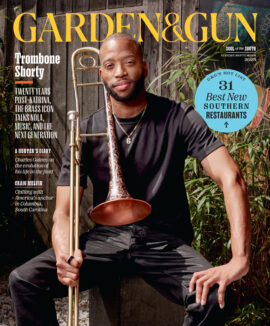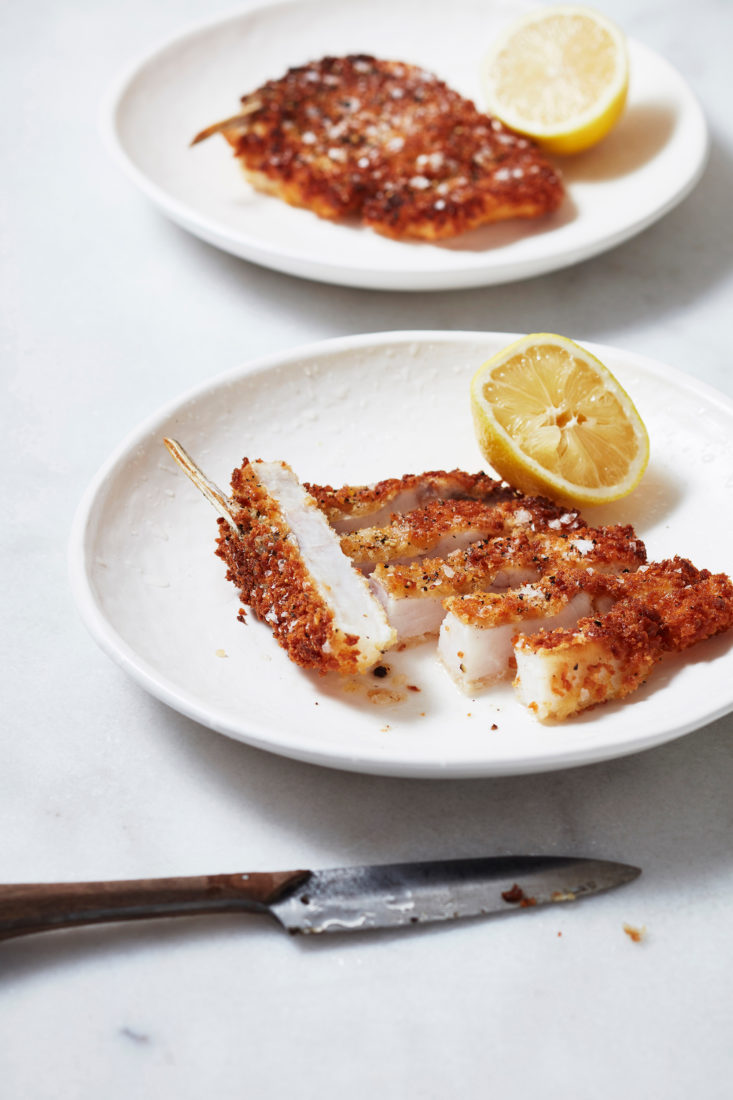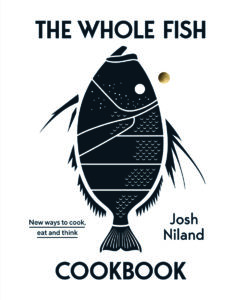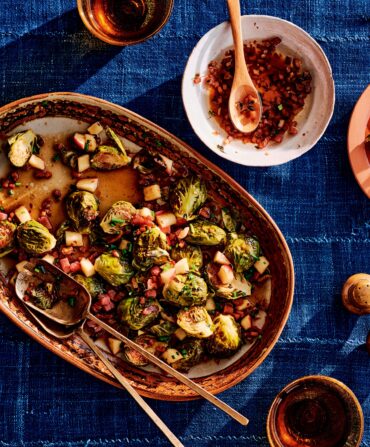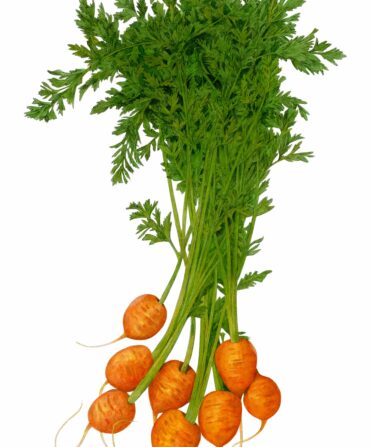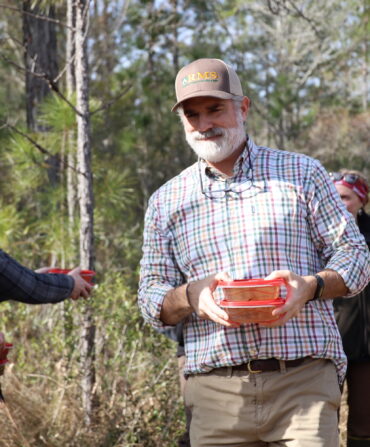Southerners know all about whole-hog cooking, but a chef in Australia wants the world to consider whole-fish cookery, too. Chef Josh Niland, whose Sydney restaurant Saint Peter was shortlisted in the World Restaurant Awards Ethical Thinking category this year, is known for his creative approaches to preparing fish and fish parts beyond fillets. “A lot of the most loved dishes in the world have been born from the utilization of waste,” he writes in his newly released first book, the supremely helpful The Whole Fish Cookbook. “Whether it is a terrine, sausages, or the humble bread and butter pudding, all these dishes were born from that thought, ‘what are we going to do with all this?’ I don’t see why fish should be any different.”
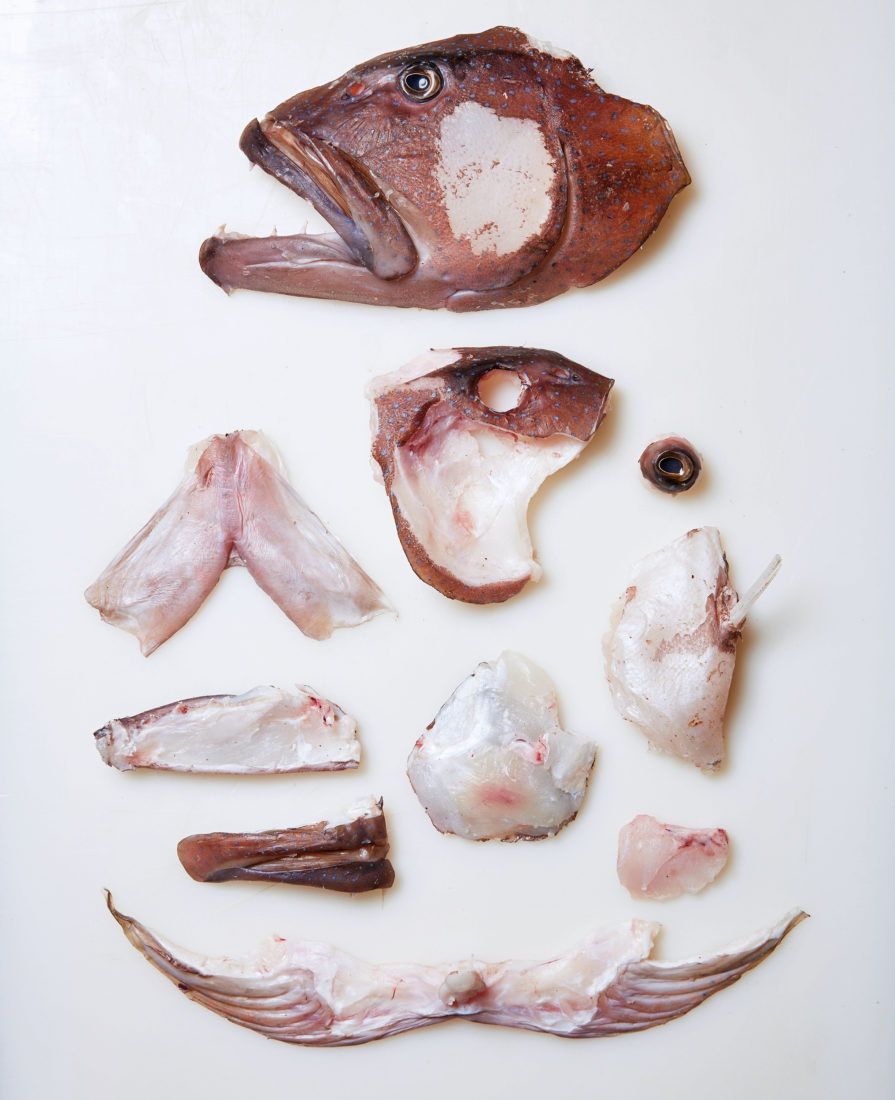
Photo: Rob Palmer
The collar is at far right, beneath the eye.
Niland writes about fillets, yes, but also how to prepare whole fish, offal, ribs, and fish collar, a tender and fatty cut located behind the head and the gill plates that has in the past been considered a throwaway. “From species to species, it never ceases to surprise me just how much flesh can be found in the collar of a fish,” Niland says. Fish collars have been popping up recently on fine-dining menus across the South, including at the Ordinary in Charleston, South Carolina, and at Rhubarb in Asheville, North Carolina.
In this recipe, Niland recommends red emperor fish, a prized swimmer in Australia similar to the snapper familiar to Southern anglers. You can ask for fish collars at your local seafood counter or prepare as follows from a whole gutted fish. Any large fish with firm, white flesh would work well for beginners. “Pull the pectoral fin outwards and make a cut behind it to separate from the fillet,” Niland describes in the book. “Then cut around behind the head until you hit bone.” The fin generally remains attached—a bit like a chicken wing. Repeat on the opposite side.
Just like a chicken wing, the collar is perfect for frying. Niland tops his breaded and fried collars with a bright homemade mayonnaise. “A herb salad or some pickles would make good accompaniments,” he writes. “Any garnish that would traditionally be paired with a pork or chicken cutlet would work perfectly with this dish.”

